WAGO Flashlights, batteries and acessories
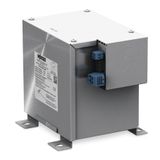
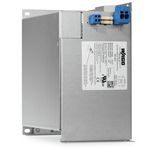

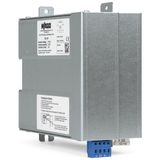
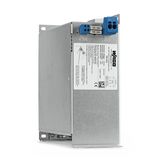
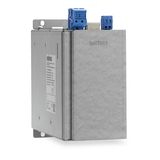
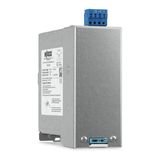
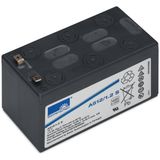
wago flashlights and batteries portfolio and field roles
Under wago flashlights and batteries you’ll typically stock three families: compact inspection beams (150–400 lm, high-CRI options for wiring colors), tight-throw spotlights for voids and façades (600–1200 lm, 10–20 kcd), and area work heads for two-hand jobs (1000–4000 lm, wide 120° optics). Look for ANSI FL1 disclosure (lumens, candela, runtime, drop, ingress), IP54–IP68 variants depending on task, and bodies that keep switches sealed and easy to actuate with gloves. Document the output step you actually use on shift—acceptance tests should verify runtime at that level, not “moonlight.”
wago led flashlights optics, durability, and flicker behaviour
Inspection is easier when beams are honest. wago led flashlights with TIR lenses deliver uniform close-range light for terminations; smooth reflectors push throw when you’re tracing cable ladders; neutral-white 4000–5000 K helps read conductor markings; ≥90 CRI variants are worthwhile inside panels. Housings in anodised aluminium or reinforced polymer, IP54–IP68 as required, impact 1–2 m, and PWM above ~20 kHz keep photos and documentation video clean. Note center candela, spill angle, and PWM method in the kit sheet so crews can predict lux at 5–15 m without guessing.
wago rechargeable torches charging standards, cradles, and fleet policy
Docking simplifies life in vans and plant rooms. wago rechargeable torches should support USB-C PD or 12/24 V cradles with screw centers for racking, CC/CV charge with NTC sensing, and charge times of roughly 3–5 h on 18650/21700 cells. Cradles with charge/fault LEDs reduce “mystery dead” returns. Publish a battery rotation and inspection cadence (cycle count, O-ring condition) and barcode each light/battery pair—stores can then replenish against work orders instead of guesswork.
wago portable lighting area heads, mounts, and safety notes
Hands-free work needs stable mounting. wago portable lighting should include swivel-frame heads with tripod threads (¼-20 UNC), magnets or hooks with stated pull ratings, and rubber bumpers for floors and mezzanines. Hybrid power (AC + DC sled) helps during generator changeovers; glare-reduced diffusers are kinder to polished stone and glass. Surge tolerance, PF/THD, and ripple figures matter when cameras are present—call these out so video teams aren’t fighting banding.
wago flashlight accessories mounts, filters, and service kits
Keep kits together so crews don’t improvise. wago flashlight accessories covers helmet clips, panel-edge clamps, holsters, traffic wands, diffusers, and color filters for fog/smoke. Service packs—O-rings, lens windows, switch boots—extend life; magnetic charge leads should include strain-relief sleeves. Each mount needs a stated fastener size/torque so nothing “walks” loose in plant rooms.
wago battery packs chemistry, protection, and replaceability
Fleet managers care about Wh, not marketing mAh. wago battery packs should list real watt-hours, UN38.3 transport status, and protection (OVP/UVP/OTP/short-circuit). Li-ion 18650/21700 with protection PCBs suits most torches and work heads; low-temp tasks can use LSD Ni-MH AA/AAA where trickle and cold starts matter. Hot-swap sleds must be keyed to prevent mismatch; on higher-end units, fuel-gauge ICs expose SoC/SoH so shift leads can pull cells before they fail on task.
wago handheld lights controls, ergonomics, and task fit
Glove-friendly UI matters more than exotic lumens. wago handheld lights work best with two or three fixed steps plus a momentary “burst,” long-press electronic lockout for pocket carry, and tail-stand or magnet bases for vertical jobs. Knurling and anti-roll flats protect lenses; a visible battery indicator reduces “sudden dark” incidents near boards.
Technical parameters and good practice
- ANSI FL1: quote lumens, candela, runtime, impact, and ingress on the label; test at room temp and at the lowest expected ambient.
- Optics: record beam angle and center candela for predicted lux at task distance.
- Flicker: keep PWM or ripple high enough to avoid camera banding (≥20 kHz or ≤5–10% ripple).
- Charging: CC/CV with proper NTC; USB-C or vehicle docks; publish charge time and cradle screw pattern.
- Batteries: store Li-ion at 30–50% SoC, cool/dry; inspect seals; retire packs by cycle count or IR threshold.
- Mounts: state tripod thread and magnet pull; avoid ad-hoc attachments near switchgear.
Selection checklist for B2B buyers
- Define task distance and target lux → choose beam type and candela/lumen band accordingly.
- Fix runtime at the step you’ll actually use; align to shift length and ambient.
- Choose charging model (USB-C vs dock), cradle placement, and spare-cell policy.
- Set durability/IP/impact class and solvent resistance; specify PWM/ripple where cameras are used.
- Build service kits: seals, lenses, cords, mounts, and label sets linked to asset IDs.
Advantages of working with Bankoflamps
Trade customers get individual B2B pricing with custom offers and a dedicated account manager. Quotes are returned quickly—about an hour—and ordering by EAN/MPN is straightforward. In the portal you can see EU-warehouse stock live, check current lead times and order status, and download price lists that stay up to date; purchase history and analytics are there for planning. Trusted clients can use post-payment terms up to 30 days. We group shipments to control delivery costs, maintain stable pricing with validity windows, and support customers in France, the Baltics, Germany, Spain, Italy, Belgium, and the Netherlands.